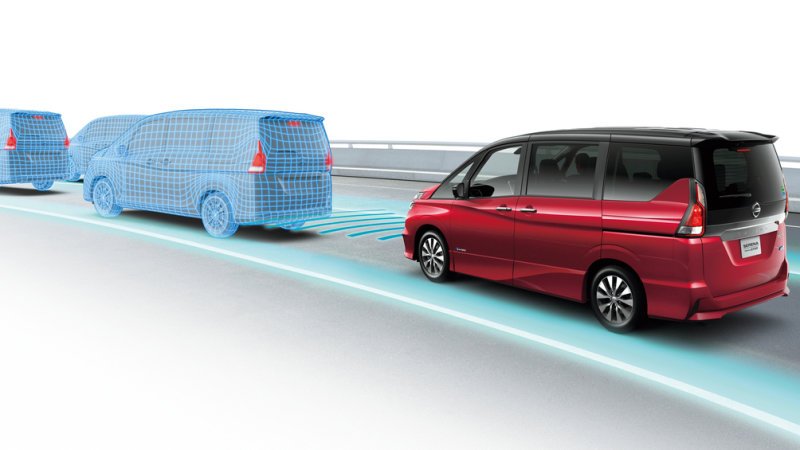However, it didn't specify a timeline or what vehicle it would be on.
ProPilot can control the vehicle's steering, braking, and acceleration automatically. A mono camera paired with image-processing technology can recognize vehicles in front as well as lane markers in three dimensions. The tech will maintain a safe distance behind the car ahead, which is preset by the driver (between roughly 30 km/h and 100km/h), and steer to keep the vehicle in the center of the lane.
Nissan's autonomous technology may give drivers the ability to take their hands off the wheel, but it doesn't necessarily tolerate it. According to Automotive News, a torque sensor on the steering column senses when the driver is touching steering wheel. If no torque is being applied, a warning light comes on, which is followed by a chime. The autonomous function will eventually disengage if the driver does not interact with the steering wheel after several seconds. This is similar to the operation of most other autonomous and semi-autonomous systems, with the exception of Tesla Autopilot.
Nissan says the current ProPilot system is well-suited to highly congested roads, and that additional functionality will be added later on. In 2018, ProPilot will be able to change lanes (like Tesla's Autopilot system can), while autonomous driving on urban streets will be part of the package by 2020. The ProPilot autonomous technology differs from Infiniti's current "semi-autonomous" tech as the latter relies heavily on lasers and is aimed towards safety instead of convenience. Nissan is claiming ProPilot makes it the first Japanese automaker with full-autonomous capability, but it's not clear how it makes the distinction between its luxury vehicles that can steer and follow cars and this new camera-based technology.
Related News



